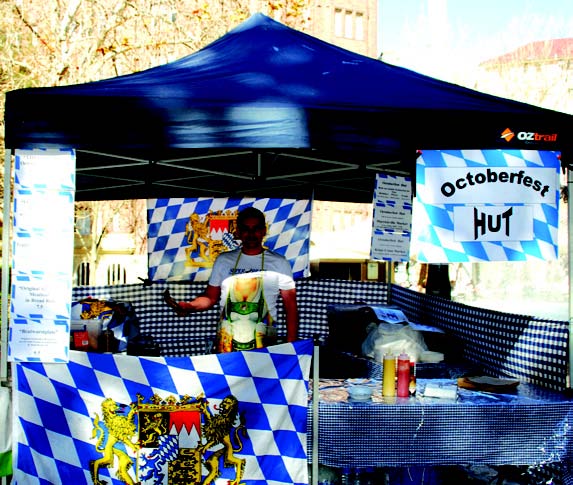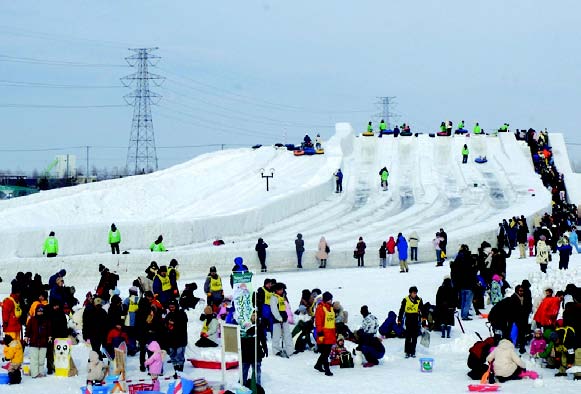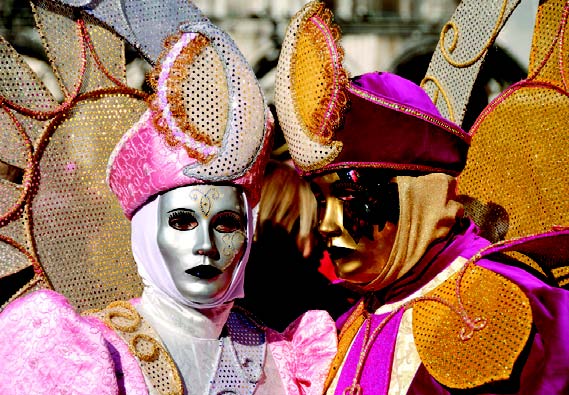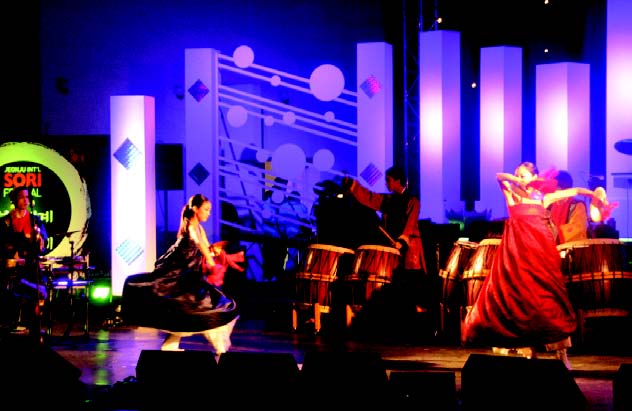
"Bang!" Fireworks, the essence of all the festival, exploded. Above all, when we mention a festival, aren’t fireworks what come to mind first? The festival of the past was an important device that passed information and condensed people to maintain the social, communal, and religious ties. But in modern times, it has changed to provide relaxation or recharging, or simply to be a period which is different from the daily work. There are numerous festivals in the world and many people around the world take the time to visit some famous festivals. Enjoy the best festivals in the world and around you.
◆ The World’s Festivals
There are many famous festivals in the world. Each country has many festivals to represent itself. Here, the most representative festivals are waiting for people around the world, and we will introduce those six festivals. Which festival do you want to go to the most?

1. Rio Carnival
Rio Carnival in Brazil, one of the world’s three most popular festivals, is held in Rio de Janeiro, Brazil. This city, called for short Rio, was the capital of Brazil from 1763 to 1960 and is famous for the harmony of natural beauty and artificial beauty.
Rio Carnival is held over four days between late February and early March each year under the government administration. At this time, the festival lasts from Saturday night until Wednesday morning. Rio Carnival was made by mixing the Lent festival of people in Brazil from the Portuguese and the traditional percussion and dance of the African slaves. This carnival was developed into the same type as now early in the 20th century by gradual development.
However, it was just a usual street festival until the early 1930s. After the samba schools were established, the schools paraded. With the parade, the carnival developed into a large-scale festival. The core of Rio Carnival is definitely the Samba Parade. The streets designed for Samba dancers’ parades are called the 'Samba de lomo'. The streets can accommodate a total of 60,000 people. Also, a large band called 'bateriah' plays percussion. In the Samba parade, about 4,000 people dance as a group. Every year, Rio Carnival attracts about 6 million tourists in the world and almost 25 million tourists domestically. A third of all tourists who visit Brazil flock there in this season.
2. Oktoberfest

Crown Prince Ludwig was really absorbed in ancient Greek culture, so one of his vassals proposed a festival like the Olympic games to him. Ludwig accepted his proposal, so the first Oktoberfest seemed like a sports festival. Bayern’s people really enjoyed that festival, so the next year at the same time they re-opened the steeple chase. For these reasons, the Oktoberfest started.
Every year six million people come to this festival and every year the number of the guests is growing. Foreigners account for 15 percent of all visitors.
But in early days, visitors made so much noise. The organization wanted to protect the festival place from drunkards. In 2005, they organized a group for “Quiet Oktoberfest” (Ruhigen Wiesn). Also, the manager in every tent forced people not to play loudly or to play tradition music after 6 p.m.
This was a kind of consideration to protect family and old people and to keep a traditional atmosphere.
3. Sapporo Snow Festival

The first festival started in 1950 and continuously opened early in every February.
Hokkaido is snowy and freezing about half the year, so every winter this region opens many ice and snow festivals. This Sapporo Snow festival is the most famous. The festival continues for about one week.
In particular, Odori Park’s snow and ice sculpture exhibition is a good attraction. The park exhibits world-famous buildings and fairy tale characters’ sculptures. Many world-famous sculptors make diverse works. During this festival, about 15,000 tons of snow are used. People all around the world gather to see that festival. 2.17 million people visited that festival in 2000, and 2.34 million people did in 2001.
It is also one of the world’s top three festivals with Rio Carnival and Oktoberfest.
4. Carnival of Venice
Venice is called the city of water. The city is one of the beautiful typical tourist spots that is connected by 170 canals, 400 bridges, and 115 islands. Many tourists come to Venice ten days before February’s Ash Wednesday, the period of the Carnival of Venice. Commonly the carnival starts on December 26th and ends one day before Lent.

The carnival first opened in 1268. Many people from every country come to see folk games, bullfights and masquerade in the period. The street festival is very exciting, as participants are singing and dancing. You can wear masks and look at others’ clothes. On a lot of canals and rivers, all gondolas form a brilliant parade. There are no rules or orders in the carnival and no limit of participants or spectators. All actions are okay.
5. International Festival Cervantino
International Festival Cervantino is the most important cultural festival in Latin America. In Guanajuato, Mexico, a city that is listed as a World Heritage site, this festival starts every October, and 150,000 spectators come. It ranked as the fourth best world festival.
The Cervantino festival started in 1972 to celebrate Cervantes, the author of Don Quixote. Now many artists gather and play recitals, concerts, plays, ballets, modern dances and operas. The performances are held in the most stand-out buildings in the town, like Teatro Juarez. Furthermore, you can watch every exhibit, too.
6. La Tomatina
This unforgettable festival is held in the last week of August in Valencia, Spain. This is the Tomato Festival! During the festival period, the small town of Valencia 'Buñol' changes to the color of red. That is because so many people throw tomatoes. La Tomatina began due to the throwing of tomatoes at the City Council by farmers who were angry because of the tomato value slump in 1944. To mediate civic spirit is the purpose and origin of this festival.
More than other festivals, La Tomatina is folksier more than anything else, so the public participation is hot. This festival is extremely fun. Before the festival is held, we can see people of Buñol having a busy day to prepare for the festival. One of the most important jobs is wrapping the town's buildings and windows with vinyl and cloth. When the tomato war begins, all people and buildings over town are covered with tomatoes.
A greased pole is installed in the center of the town square and a ham is hanging at the end of pole. To get the ham on the pole, participants climb up the pole and shout 'tomato'. After getting the ham, the tomato festival begins with the boom of guns. During the festival, they crush and throw tomatoes and prepare old clothes and goggles. After one or two hours, firecrackers announce that the tomato festival is over. If you throw a tomato after a firecracker, you should pay huge fines.
◆Festivals in Jeonju
As many countries of the world have their own festivals, in Korea, each region has several festivals to match its characteristics. Jeonju also has festivals to represent the local color. Two of them are the Sori festival and the Jeonju International Film Festival (JIFF). Jeonju Sori Festival and JIFF receive the attention of the whole world and have developed into international festivals.
1. Sori Festival

Jeonju Sori Festival is planned by Jeollabuk-do. It is made for understanding diverse music and finding Korean traditional music’s high quality.
After the preparatory festival in 2000, the real festival started in 2001. The traditional music and modern music from about 20 countries is performed.
The whole festival lasts for about a week. Audiences can see and hear diverse Pansori, Korean Traditional opera, a percussion festival and invited artists’ performance. Diverse performances are done in various locations: downtown, the Hanok Village, the Sori Arts Center, and the CBNU Cultural Center. The festival normally starts between September and October.
2. Jeonju International Film Festival
If you should choose two Korean typical film festivals, you can choose Pusan International Film Festival (PIFF) and Jeonju International Film Festival (JIFF). PIFF is aimed at watching the flow of world films, discovering and assisting talented Asian directors, and floating the vision of Asian films. On the other hand, under the slogan ‘Freedom, Independence, Communication,’ JIFF is aimed at introducing shocking and alternative films that have different techniques or aesthetic sides in comparison with the mainstream films and supporting screening digital films.
A special project, ‘Three Men in Three Colors’ appears every year especially for showing premiere screenings and distributing short digital films. JIFF chooses three directors and supports 50 million won (about $46,168) for making 30 minutes of digital film. It is a typical program session that started from the first JIFF.

Until 2006, the 7th film festival, only Asian directors were chosen; the 8th included Europe, and in the 9th African directors did it. The main event stage opens in Jeonju Cinema town. Other movies screen in the CBNU Cultural Center and Moak Hall in Sori Art Center. JIFF opens every year between the end of April and start of May. If you missed JIFF this year, do not miss it next year. If you want special experience, be a staff member of JIFF. Between December and January, JIFF recruits staff in many fields on its homepage. Challenge!
◆ School Festival
CBNU has its own festival which all the students can’t wait for. The school festival is the symbol of the youth which is filled with romance and aspirations. Even a long time after graduating, the memory of the festival is enshrined in people’s hearts.
1. Daedongje
The word “Daedong” has been used since the middle of the '70s and '80s, when university students launched democratization movements against the military regime. Eventually, the word “Daedongje” became the symbolic name of the university festival, meaning ‘one big gathering.’ This festival is held once a year, and students have an opportunity to come together in unity.
CBNU also has its own Daedongje. This festival is held annually in May. The festival continues for three days and hosts a variety of events on the eve of the festival.
The festival this year included various fantastic events such as ‘Find the best department in CBNU’, ‘KIA superstar K5’, and ‘Music Festival‘. Many participants attended each program, receiving hot reactions from the audience.
Above all, what you shouldn’t miss is the tavern constructed by students. Several college departments and clubs set up tents and make snacks and sell alcoholic drinks. During the festival, students relieve stress built-up in the meantime and enjoy the various experiences. Even though you can’t feel that it’s as gorgeous as other festivals, you can feel the passion and power of the young.

We have been talking about famous festivals in the world, in Jeonju and at the school. Do you want to go to any festivals? Do not grieve if you can’t go to the overseas festivals! Korea still has many festivals that are as good as the overseas festival. You can enjoy the festivals as you want. Put your studying aside for a moment and enjoy the festivals during this summer!
Kim Min-ji, Kuk Chan-song& Lim Hyeon reporters

